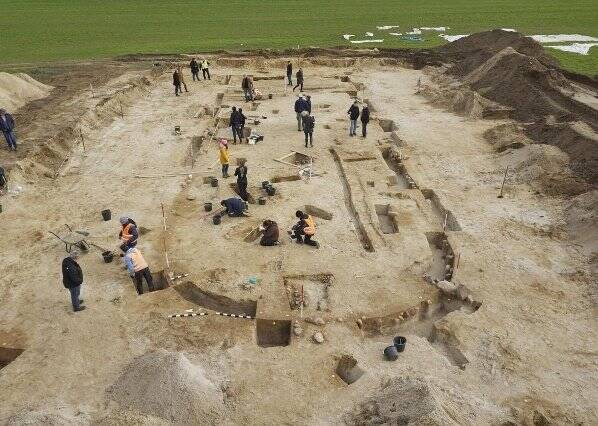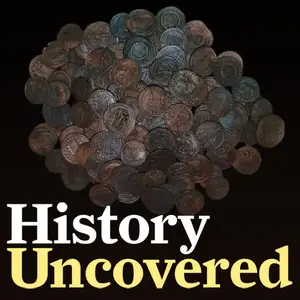A burial mound possibly linked to King Hinz was discovered in 1899, but there is little historical record of his rule.

Prignitz DistrictThe ancient hall was discovered during excavations of the area surrounding the “King’s Grave” in Seddin, northwest of Berlin.
Archaeologists have unearthed a massive Bronze Age building believed to be the meeting hall of the legendary King Hinz, who was purportedly buried in a golden coffin.
The discovery was made not far from a burial mound known as the “King’s Grave,” which some say is the place where King Hinz was buried. The mound itself was first discovered in 1899 and is widely regarded as the single most significant 9th-century burial site in northern Central Europe.
Excavations around the burial mound began in the spring of 2023 — a collaborative effort between the Brandenburg State Office for Monument Preservation and a team of archaeologists from the Georg-August University of Göttingen.
State archaeologist Franz Schopper called the discovery a “spectacular find,” according to a translated statement.
At about 102 feet long and 33 feet wide, the meeting hall is the largest known building of its kind from the Nordic Bronze Age — which lasted from 2200 to 800 B.C.E. — according to the Brandenburg State Office for Monument Preservation. In fact, between 1800 and 800 B.C.E., there were only two other similar buildings between Denmark and southern Germany.
“We were overwhelmed by how big this building must have been,” said archaeologist Immo Heske, who led the team that made the discovery.

The building was constructed of wooden planks and wattle and daub — a building technique that involved sandwiching a sticky substance like clay between interwoven strips of wooden lattice. It was held together with clay plaster, and the roof was likely covered with thatch or straw.
Researchers believe the building originally stood 23 feet tall and contained multiple levels to accommodate living and storage. Researchers also unearthed a fireplace in the center of the hall, and a miniature vessel that may have been used for ritualistic purposes.

Prignitz DistrictArchaeologist Immo Heske points to a portion of the Nordic Bronze Age meeting hall.
Although little is written about King Hinz in the historical record, there is some evidence to suggest that he was favored by his people.
Legend tells of a king named Hinz who once ruled over the kingdom of Prignitz, now a district in Brandenburg, Germany. Unlike rulers who came before him, he was kind to his citizens and well regarded among them.
So, when King Hinz died, his people sought to honor him in a fitting manner. As reported by Ancient Pages, it’s said that they constructed him an impressive tomb and three coffins — one for his wife, one for his royal servant, and, most splendid of all, a golden coffin for the king himself.
To protect the king’s grave, the people of Prignitz built a massive burial mound over the tomb. Later, when a royal burial mound was discovered in Prignitz in 1899, many claimed it was Hinz’s.
According to the research group TOPOI, during that excavation, researchers unearthed three urns with remains inside, as well as a collection of valuable grave goods indicating one of the individuals was a ruler.
Despite scant historical record of King Hinz’s rule, this new discovery reveals, at the very least, the power and influence of Prignitz royalty within this part of Central Europe. Given the size of the meeting hall, and the massive burial mound, it’s likely that Prignitz was once a center of power during the Nordic Bronze Age.
According to Ancient Origins, the German Research Foundation (DFG) has taken significant interest in the site and has agreed to fund ongoing research into it. This includes a grant of 300,000 euros over the course of three years.
After reading about this Bronze Age discovery, read about the discovery of a Viking hall in Denmark that may have been connected to Harald Bluetooth. Or, learn about the 5,000-year-old city that was dubbed the “Bronze Age New York.“





